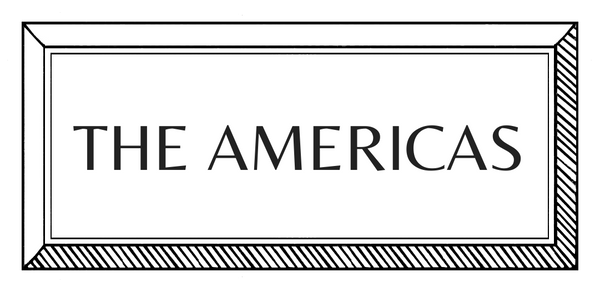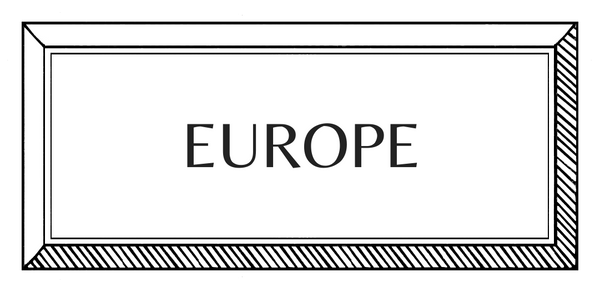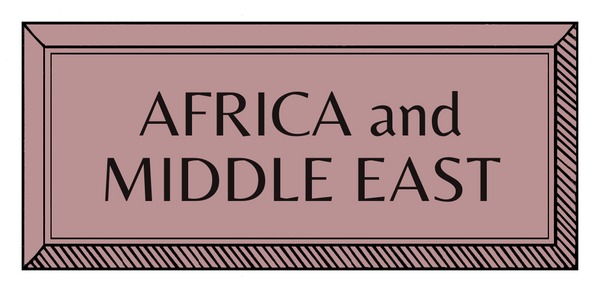MAKERS | EUROPE | UK | MULTI-MEDIA
Mulvany & Rogers | Miniaturists

Susie Rogers and Kevin Mulvany, photographed by Claire Newman Williams.
In the garden of a 17th-century farmhouse just outside Bath, Susie Rogers and Kevin Mulvany build miniature versions of some of the world’s most famed buildings. Working in 1:12 scale, they have recreated iconic locations including Versailles and Buckingham Palace. For more than 30 years, they have worked side by side, drawing on their background in art history and shared interest in period buildings and atmosphere.
How did you begin?
We stumbled upon an old dolls' house at Camden Market just after university. Restoring it for fun sparked our interest, and we decided to create one of our own. Taking it to a specialist dolls' house maker's showroom in London, we received feedback that it wasn’t perfect, but there was potential for improvement. They commissioned another, which sold immediately. And that was the beginning!
It was completely serendipitous. But looking back, it fits. We were always making things. We grew up watching Blue Peter and trying every project. We both studied History of Art and Architecture, and we both felt drawn to buildings with a story. Even from the beginning, we wanted to get the details right, including the intricate brickwork, period windows and the correct proportions, even in miniature.

A Mulvany & Rogers miniature depicting the Versailles facade © Mulvany & Rogers.
How did you learn?
Our journey has been one of self-discovery and learning. Kevin had a brief stint at a model-making studio at Shepperton, but the majority of our knowledge has come from trial and error.
Over the years, we've collaborated with other makers, including some from the film industry and others from traditional crafts, and have picked up techniques along the way. We don’t rely on many tools or machines. Most of our work is handmade, a testament to our dedication and passion for our craft.
How do you plan, prepare and execute your works?
We start with research: visits, photographs, and old plans. We look for what gives a building its identity. We choose the rooms that best tell the story, and then I’ll do a watercolour sketch for the client. Kevin draws up the technical plans and builds the structure in wood. I complete finishes such as painted floors, faux marble, graining, and carved details.
We also bring in other miniaturists for specific parts. Some are makers we’ve worked with for decades, and we often encourage them out of retirement to create something new for our pieces - this is quite fun! Others are experts in their field who have never worked in miniature before. We try to find the right person for each element.
Who or what most influences your work?
Mainly, 17th and 18th-century buildings. But also places we’ve visited and loved. We often go off midweek to see a house we’ve heard about. That’s where many ideas begin.
We want the spaces to feel lived in. It’s not just about scale or accuracy. It’s about creating a sense that something has just happened, or is about to happen.
What does a typical day look like?
We start slowly, have some coffee, and then head to the studio. We might work for a few hours, take a break for lunch, and return in the afternoon. We stop around 5pm and go swimming most evenings.
On some days, we will visit a house or spend a day in the garden. The pace has changed now that our children have grown up. It’s more fluid, which suits the work.

A cross section of a Georgian House, lived in by a modern family © Mulvany & Rogers.
We live just outside Bath in a farmhouse dating back to the late 1600s. Our studio is in the old coach house and woodshed at the bottom of the garden. It’s timber-clad now and covered in roses. In the summer, we often spend half the day in the garden. It’s only twenty paces from the house, but it feels like its own world.
The best thing about being a craftsperson is the freedom. We don’t have a boss, a commute, or office politics. But there’s always the worry of what’s next. We’ve had waiting lists of five years, but when it drops to six months, you start to feel it. There’s no safety net. That anxiety never really goes away. But we would rather live with uncertainty than boredom.

One more thing... An object you’ll never part with?
A set of six silver teaspoons from Birmingham, around 1909. They’re plain but perfectly shaped. I use them every day. I also have a sweet tin I had as a child, with a picture of a secret garden. I used to imagine wandering through it with my cat. I wouldn’t part with either.
A place or space that inspires you?
Home. We’ve lived here for over 30 years. Our children grew up here. It’s where we’ve done all our work. The house has a long history, and we’re just a small part of it, but it feels like ours. Everything we’ve made has started here.
Interview by Emma Becque
Images from Mulvany & Rogers, Claire Newman Williams and Kathryn Chapman



















































